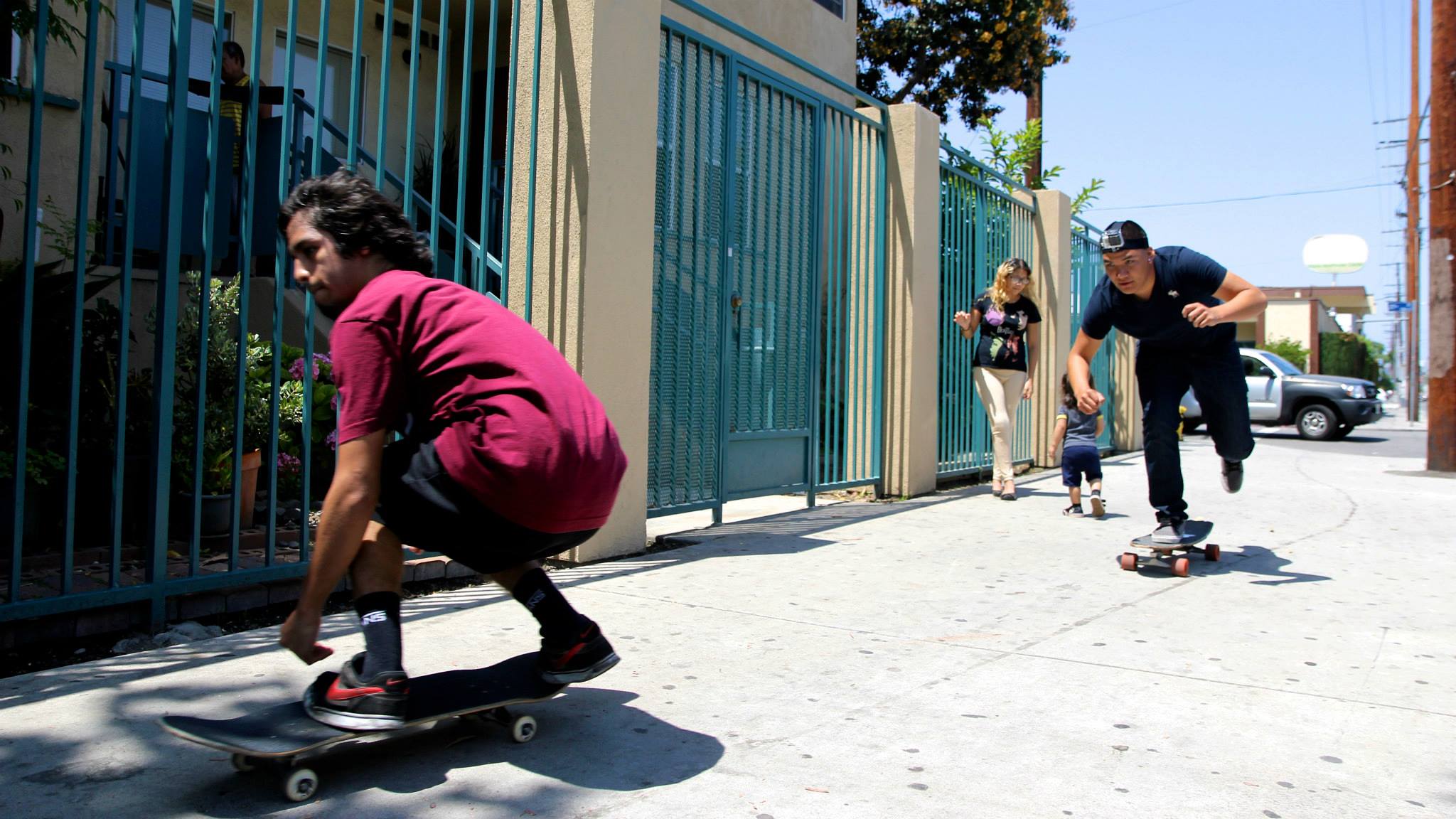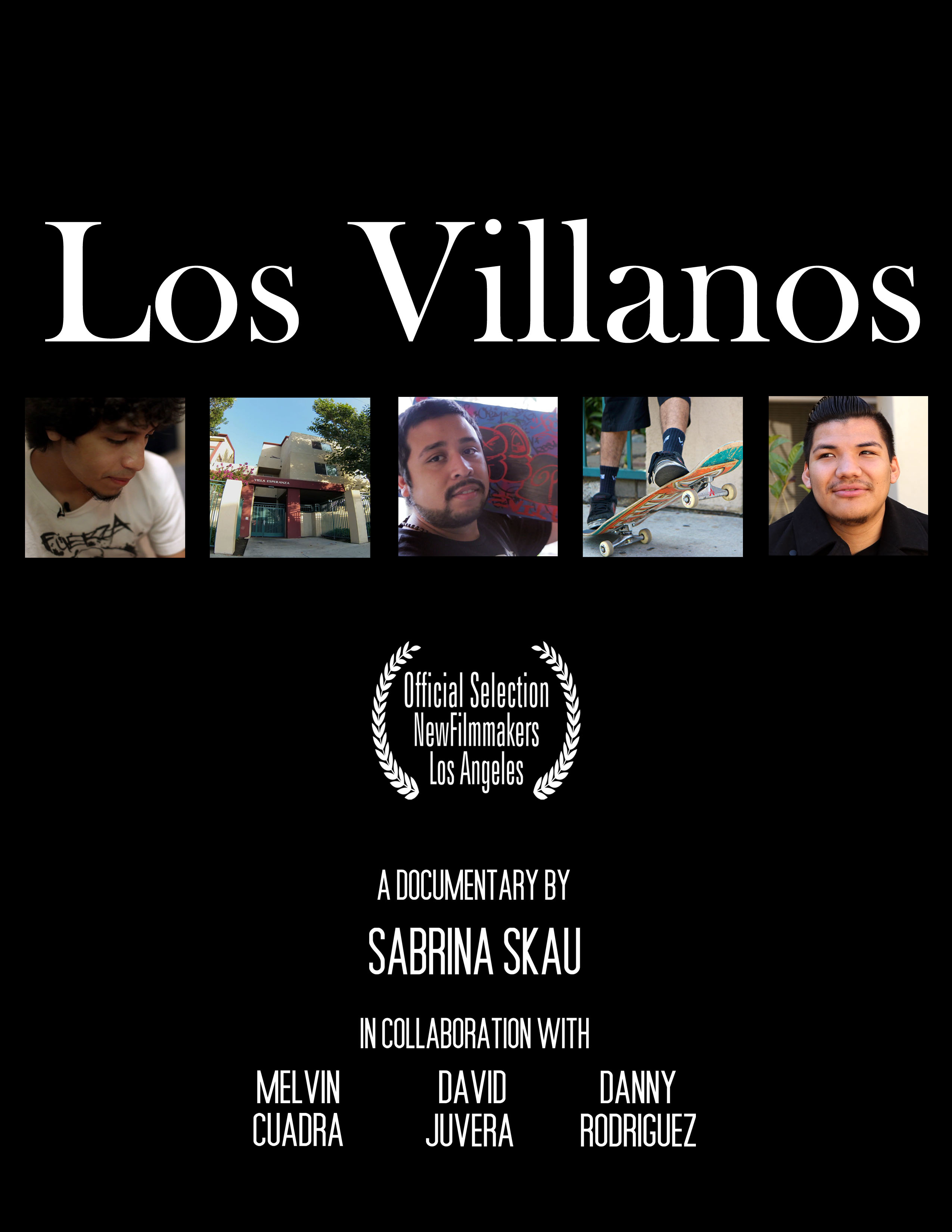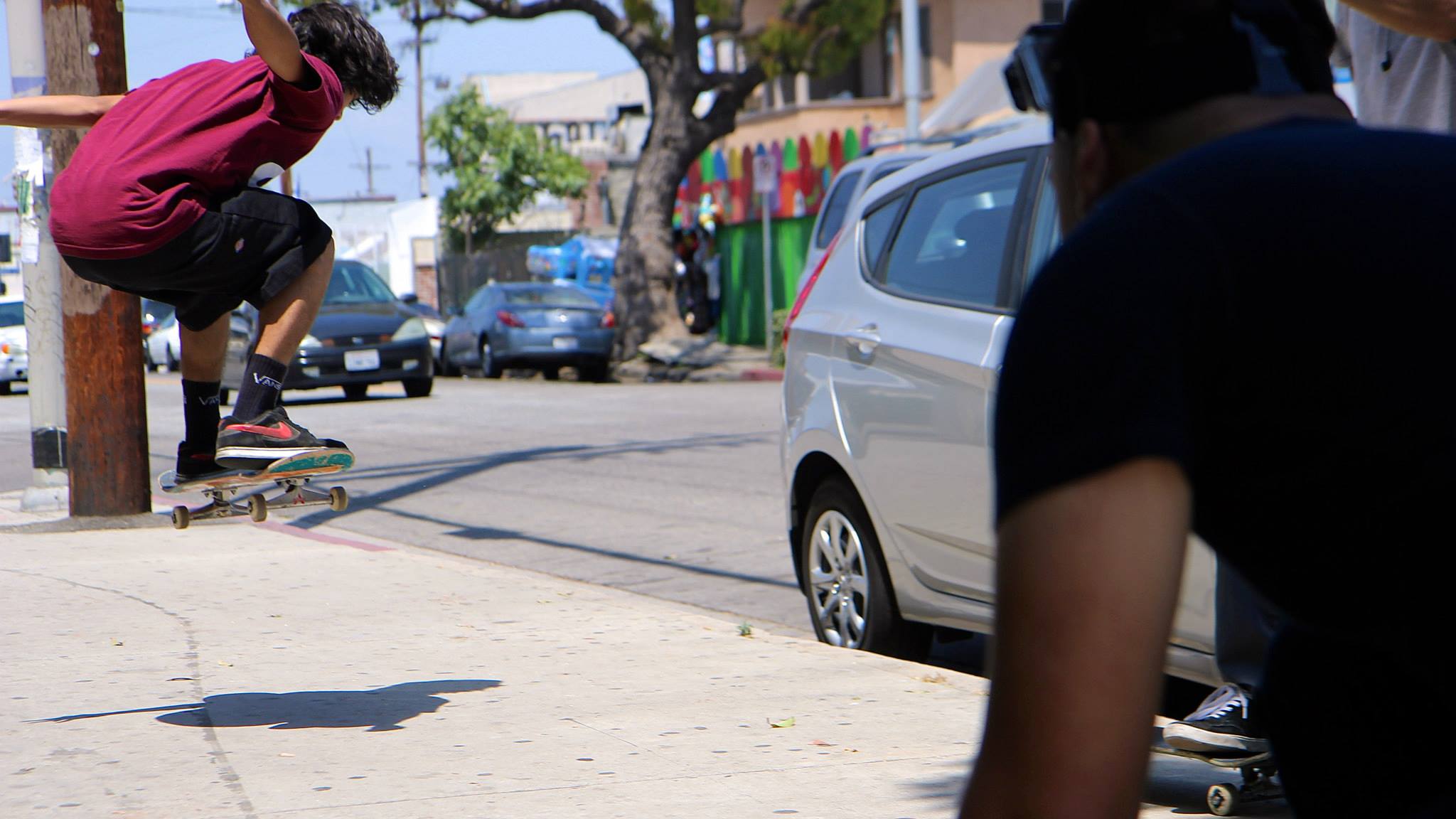

Do not let yourself be fooled by big budget movies with wide audience marketing. The types of films that love to tell the tale of the fresh faced farm boy who, against all odds, perseveres and conquers all. Yes, that person may exist but…it’s not the only American story. All peoples from vastly different backgrounds face adversity and strive throughout their lives to be positive. They are found just as often in the big city as they are in rural America. While the stories and the struggles are often similar, the backdrop can convey a feeling of unfamiliarity in a certain percentage of the audience. While the tales being told onscreen can transmit our commonalities, the differences in the visual and sonic environments can build a bridge which we can use to reject or understand how similar we are even though the setting might be foreign. For the documentary Los Villanos, sound designer Xiao’ou Olivia Zhang needed to create the sonic presence of South Central Los Angeles. It is the setting for this coming of age film about three youths who have used skateboarding as a way of coping, bonding, and staying friends in this difficult area. Los Villanos screened at the December 2013 NewFilmmakers LA Film Festival and the 2014 Society for Visual Anthropology Film Festival. It received a “Best of 2014” nomination in the documentary category for the NewFilmmakers LA festival. The film can be both uplifting and saddening as the three boys become men and deal with the obstacles that they experience while facing (literally) life-threatening circumstances and their hopes of improving their stations in life.

The three young men which the film follows are Danny, Melvin, and David. This group of friends grew up together in an affordable housing development in South Central Los Angeles and gave themselves the name “Los Villanos”. Against a backdrop of poverty and violence, they and their families have carved out a space for flourishing in the “Villa of Hope” in South Central. In this documentary, we encounter the young men on the cusp of adulthood. As the joys of a relatively carefree childhood slip further and further away, they face the stresses of work, school, and family obligations. The friends strive to honor their immigrant parents’ sacrifices, hoping to live out some form of the American Dream. Their struggles call into question the belief that upward mobility can be achieved by hard work alone. The film is an exploration of the intimate effects of violence, the difficulties of working class life, and the importance of family and friendship. Los Villanos opens a window into the young men’s coming of age in the City of Angeles. To impart to the audience what it feels like for these three friends, Olivia would need to capture the din of the “Villa of Hope” and its surroundings while also giving a distinct separation to the sounds and voices the filmmakers were focusing on. Sabrina Skau (the film’s director) stipulates, “Los Villanos introduces viewers to three first-generation Mexican American young men [David, Danny, & Melvin] who grew up in South Central LA as they recount growing up together in an affordable housing development. It was filmed over the course of seven months, Los Villanos relies completely on live recordings from the neighborhood, which Olivia Zhang was instrumental in capturing. The neighborhood has a very specific ambience that includes the sounds of barking dogs, music emitting from passing cars, and skateboarders barreling down the sidewalk. Remarkably…and this is a testament to her skill and awareness, Olivia was able to record audio that was extremely clear considering the challenging conditions and captured the essence of the setting. Creating definition and clarity in that environment is so much more than just recording. In addition, Olivia not only did an outstanding job technically, but she also developed a great rapport with the three subjects of our film, making them feel comfortable about sharing the details of their daily struggles, hopes, and dreams.” Zhang notes, “Most of the time, when people think of sound design, the images of car chasing, wars, or fantasy come to mind. However, sound design is everywhere in films, including documentaries. Documentary sound design is the art of subtlety and authenticity. Adding sound in a documentary requires a very delicate balance. Too much of it dilutes the sense of reality; too little, the film loses its cinematic voice. A good sound design preserves the authenticity of reality as well as carries out the cinematic power of the story.” The soundscape which Olivia captured, arranged, and placed in the film is one of layered and complex chaos. They appear in alternating clarity much in the way a camera focus itself and concentrates on one subject while its peripheral inclusion of others gives a sense of space and depth. The sound of dogs barking echoes from in the community courtyard to the neighboring street, the kind of trucks that frequent the neighborhood, the shops and merchants calling out their goods with bells as skateboards roll by on the pavement outside, the differing kinds of music on the radio from every household’ window which resonates down the block, the harmonic choirs of summer cicadas and crickets the truck drivers hear when they come back home at night, these are the sounds of lives which only authentic location recordings can offer in the theatre.
The wheels of the skateboards are a metaphor for the lives of these three men. As the wheels turn, experiencing the streets together, the pavement ages them. What were once three carefree friends bonded together in a difficult environment, becomes three men struggling to honor the sacrifice of their immigrant parents and weave themselves into the fabric of American Society. When Danny was shot at an early age, the three grew even closer together but now time and the responsibilities of maturing have created challenges which a bullet could not achieve, possibly separating these friends. They use skateboarding to stay connected. Their desires for college and upward mobility are drastically challenged by their economic situations.
Zhang discovered a fourth character through her work. The community of South Central itself came alive for her as she was recording and creating a sound library for Los Villanos. She found herself returning to the area to capture the unique identity of this location. The sounds of the area became an identity on its own which would affect the film audience in such a way that they would share a connection with Los Villanos. Olivia is proud of this discovery as she proclaims, “It was a rewarding moment for me when the identity of the community came alive through sound design. All of us were surprised at how important it became in the film. Being able to add a character into a film that was never there and can’t be seen…that’s an achievement any sound designer would be ecstatic to produce.”

(Production still courtesy of Sabrina Skau)

Leave Your Comments